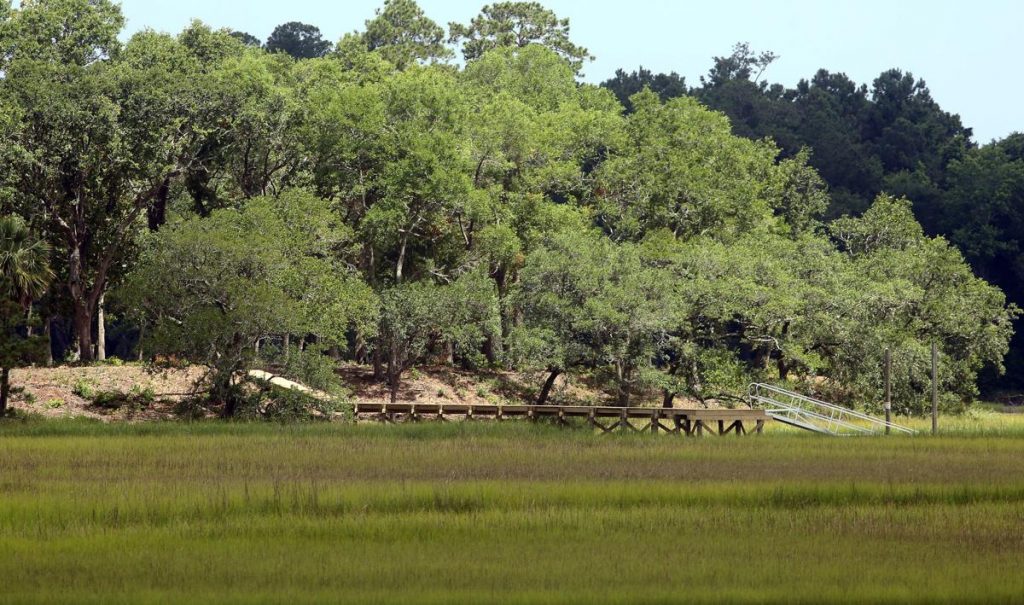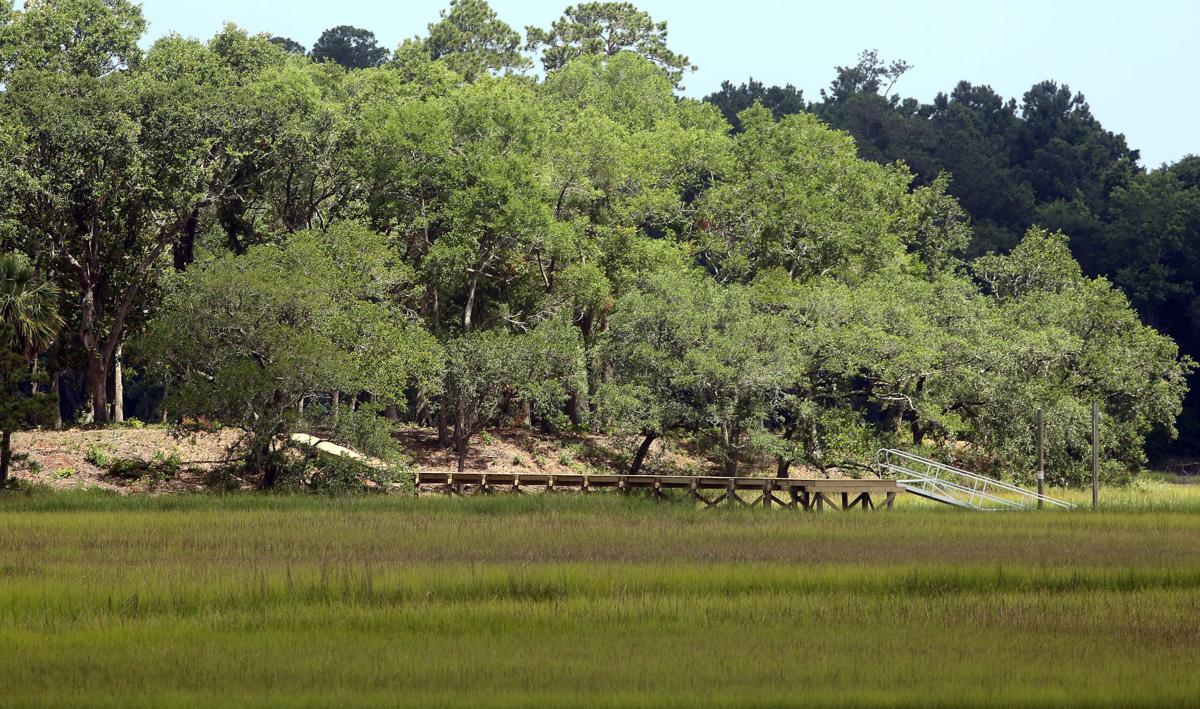SOUTH CAROLINA: Graves May Be In Way of Power Lines on Historic Island
Nobody knows just how haunted “Ghost Island” might be.
An electric company and the island’s owner might be forced to find out.

Graves might be in the way of a power line to the privately owned Lining Island, also known as Ghost Island, which is located next to Charles Towne Landing. Brad Nettles/Staff
Brad Nettles bnettles@postandcourier.com
The Coastal Conservation League has asked state regulators not to permit an underground electric line to be run to privately owned Lining Island until a detailed archaeological survey can be done to see if any bodies or “significant historic and cultural resources” remain buried there.
“There are more questions than there are answers on this one,” said Jason Crowley, the league’s communities and transportation program director.
The S.C. Department of Health and Environmental Control is at least considering the request.
The department “is evaluating the project for direct impacts to the critical area as a result of the directional boring and will coordinate with the appropriate resource agencies as needed,” said spokeswoman Laura Renwick.
Lining Island, popularly known as Ghost Island or Tomb Island, is a round knob of high ground in Oldtown Creek off Charleston Harbor in West Ashley. It is roughly near Charles Towne Landing State Historic Site.
The island’s owner, Dr. Christopher Swain of Charleston, said the family had a ground penetrating radar study performed where the power line would run, and an archaeological survey isn’t needed.
The radar “confirmed that that no underground structures or artifacts are present where the line and small ground transformer will be placed. Running an underground electric power line to our property is completely unrelated to any alleged historic character of the island,” Swain said.
“When my family purchased Lining Island several years ago, it was an overgrown dump that was used by vagrants and party goers. We have cleaned up the property and removed several tons of litter,” he said.
“Now that we are beautifying and taking care of the island, we seem to have suddenly generated lots of concern and been falsely accused of destroying an historical site, which is far from true. My family has abided by all of the applicable ordinances and regulations, and will continue to do so,” Swain said.
For a small hummock, the island has a larger-than-life history and an almost mystery past. At one time, it held an untold number of graves, as well as the mausoleum. What happened to those remains has never been clearly documented.
For years, the island was one of those Charleston water “haunts,” a place to show boating guests and tell creepy tales about.
But it was once owned by prominent Charleston families that included Dr. John Lining, a 1700s physician whose keen interest in science included botany, human metabolism and weather.
Lining recorded some of the first climate observations in the American colonies, and is credited by the National Oceanic and Atmospheric Administration as one of the founders of meteorology in the country. The families had a cemetery on the island.
So by state law, the grounds must be surveyed for historic artifacts as well as remains, and any disturbance of them mitigated.
Or, in other words, somebody has to see to the ghosts.

There were burials and graves on the island, records indicate.
A newspaper article in 1896 talked about a desecrated grave on the island. By 1906, many curiosity seekers were visiting the site, remarking on the large vault and exceptional preservation of the coffins, said Michael Trinkley, director of The Chicora Foundation Inc., which does archaeological consulting. Trinkley, who has done some cursory research on the island, spoke to The Post and Courier for the earlier story.
Vandalism evidently got worse, and one mausoleum vault demolished. The bodies reportedly were removed to another family cemetery in Camden and possibly elsewhere.
But the removal has not shown up in records so far, said state archaeologist Jonathan Leader. The island held at least a family cemetery of indeterminate size and a mausoleum. There are historical notices of burials, he said.
“There’s no particular reason why they would be gone. Why would they be gone?” Leader said.
Without any documentation of the removal, a forensic survey of the island needs to be made, one detailed enough that remains or artifacts are found if they are there, he said.
–postandcourier.com



